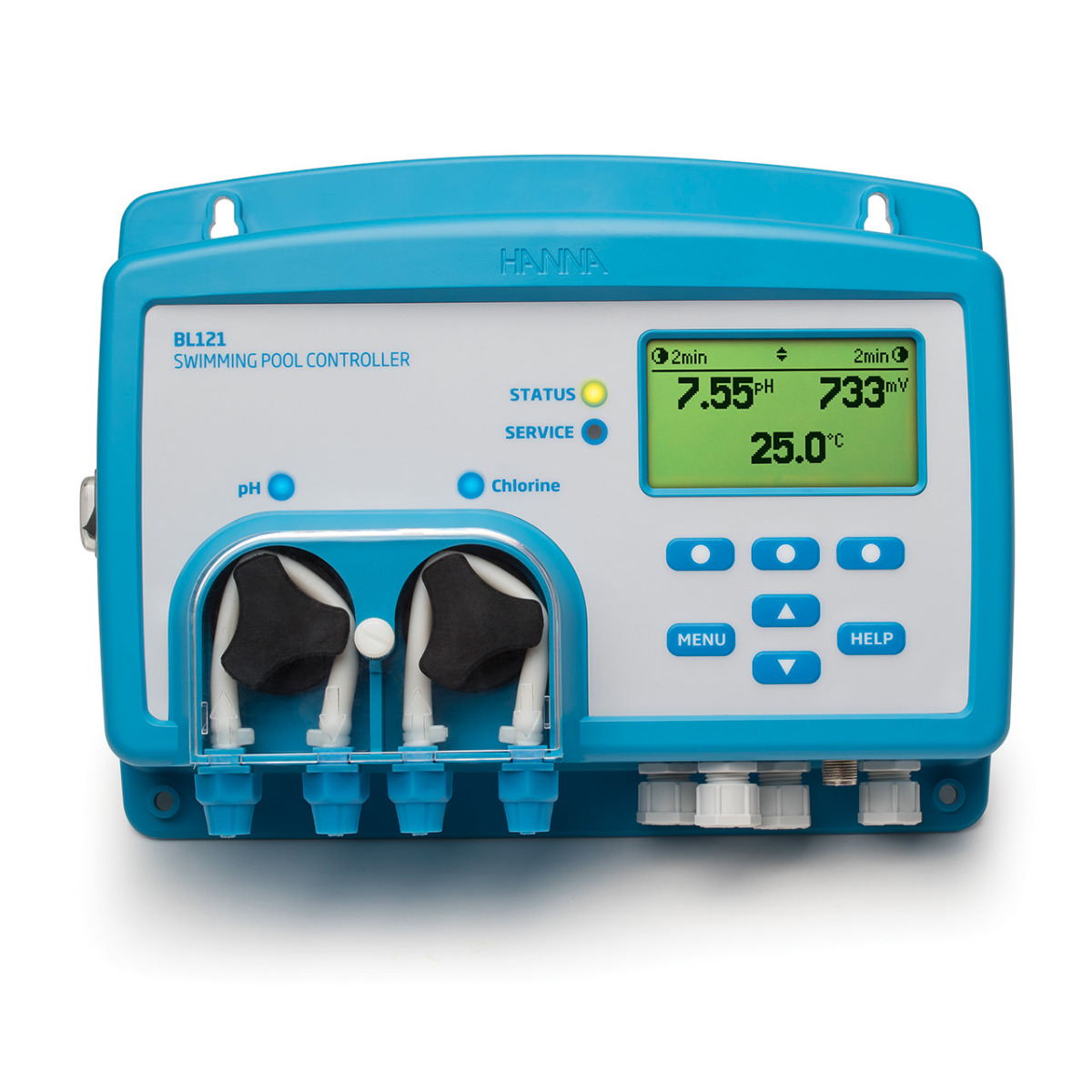For the purity of the water in your pool, in addition to the filtration system, it is necessary to disinfect the water. To do this, either special installations or chemicals are used to disinfect water. If chemistry is used, then it is necessary that the water has a constant required level of pH, disinfectant, algaecide and flocculant. There is not always time to dispense chemistry for the pool on your own, and the process itself is not pleasant. To automate the process of supplying chemicals to the pool, special dosing pumps and entire dosing stations are used. The main task of any dosing pump is to introduce the required amount of liquid into the pool water.
A positive quality of dosing pumps is the ability to set the speed of operation when using it, or program it so that a given amount of liquid is pumped over a certain period of time. The use of dosing pumps is also good when it is necessary to pump a large amount of liquid, since such a pump can move up to several hundred liters in one hour.

Dosing pumps are of three types: peristaltic, diaphragm and plunger.
Peristaltic dosing pumps are also called peristaltic dosing pumps, due to the specifics of its structure. The main components of peristaltic dosing pumps are a hose and a roller type mechanism. Due to compression, it is the rollers that prevent the movement of fluid through the hose. The pressure changes and an opportunity is created for pumping liquid. The advantage of the peristaltic pump is its interaction with liquid substances exclusively inside. Due to the fact that the hoses are made of a dense and smooth material, the pump can pump viscous, compacted liquids and substances with a toxic composition. And the chance of damage to the hoses is absolutely minimal. Repair of a peristaltic dosing pump does not take much money and time. All you need to do is replace the hoses.
Diaphragm Dosing PumpDiaphragm dosing pumps are not inferior to peristaltic pumps. The diaphragm pump dispenser consists of a diaphragm connected to a piston, which, by reciprocating, sequentially fills and empties the dispenser chamber. While one chamber takes in liquid, the other ejects it, thus a continuous flow is created by the dosing pump. Solenoid valves in diaphragm dosing pumps are used to automatically adjust the volume of liquid supplied. Electronics controls their opening and closing. Such valves require strict adherence to the environment parameters set by the developer.
Due to their elasticity, the membranes can be subjected to high pressure, and accordingly they can pump even more liquid. Diaphragm dosing pumps do not operate on electrical energy, but on electromagnetic energy they create sparks, and due to this they can be used to work with substances that can easily ignite.
Comparative characteristics of EMEC diaphragm dosing pumps
The plunger dosing pump works due to the special movement of the plunger (piston). The plunger pump allows you to pump more liquid than the membrane and peristaltic. Such a pump has small dimensions and its installation can be carried out in a variety of conditions. And if the plunger pump is made of a stable and strong material, then the breadth of its application increases significantly. It can be used with semi-solid and hot liquids. In order to maintain the controlled parameters within the specified limits, it is necessary to use complex electronics, which contain digital and analog control units, sensors, control panels, flow indicators, chemical mixers, high-precision proportional dosing devices, etc. In the case of manual control of the pump, the liquid volume must be controlled independently, and the process of turning the pump on and off must be monitored.

How to choose the right chemical dispenser?
For the correct selection of a dosing pump, it is necessary to know exactly the specific parameters of the pump.
What substance will be dosed by the pump. Depending on the substance that will be pumped by the dosing pump, it is worth paying attention to the materials from which the pump part will be made, membranes, seals or plungers (if we are talking about plunger dosing pumps). For example, for strong acids (such as concentrated sulfuric, nitric, chromic anhydride or chromic acid), the use of polyvinylidene fluoride (also referred to as PVDF or fluoroplastic) is better suited. And also, as an option, polyvinyl chloride (PVC) can also be used, depending on the concentration of the substance. For solutions with a high alkali content, polypropylene is recommended. This material can also be used when dosing weak acids or weak solutions of strong acids (H 2SO4 up to 65%; HNO3 up to 45% ).
